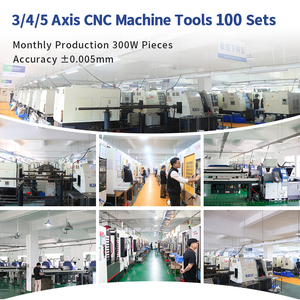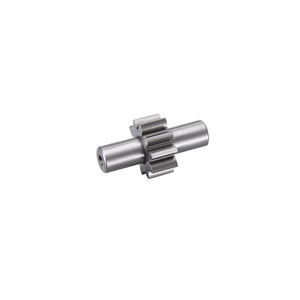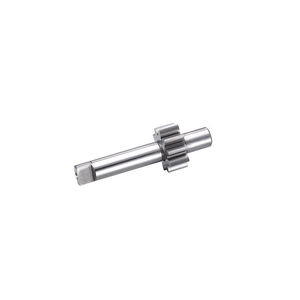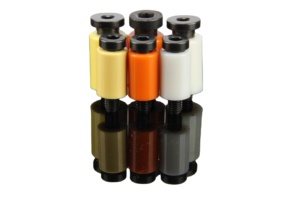
All categories
Featured selections
Trade Assurance
Buyer Central
Help Center
Get the app
Become a supplier

(1946 products available)



























plastic gear component mould are essential components in the realm of industrial machinery, playing a crucial role in the transmission of mechanical power. These cylindrical gears are characterized by their straight teeth, which are parallel to the shaft. They are primarily used in applications where the rotational speed needs to be adjusted or torque needs to be increased. plastic gear component mould are widely found in various machinery, from automobiles to industrial equipment, due to their efficiency in transferring motion and force. Their design allows for smooth operation, minimizing friction and wear, making them a reliable choice for long-term use. As industries evolve, the demand for high-performance plastic gear component mould continues to grow, driving innovations in gear technology.
The diversity in plastic gear component mould is vast, catering to different industrial needs and specifications. Common types include external gears, internal gears, and rack and pinion gears. External gears are the most prevalent, featuring teeth on the outer surface and used in a variety of machinery. Internal gears have teeth on the inner surface and are often employed in compact configurations where space is limited. Rack and pinion gears convert rotational motion into linear motion, ideal for steering systems and lifting devices. Each type of plastic gear component mould is designed to meet specific requirements, ensuring optimal performance and durability in its respective application. The choice of gear type is pivotal in achieving desired mechanical outcomes.
plastic gear component mould offer a range of functionalities that are indispensable in mechanical systems. Their primary function is to transmit power between parallel shafts, which is crucial in many industrial machines. The design of these gears allows for precise control of speed and torque, enabling efficient operation. Features such as high load capacity, durability, and ease of maintenance make plastic gear component mould a preferred choice for engineers and manufacturers. Additionally, advancements in material science have led to the development of gears with enhanced wear resistance and reduced noise levels. The simplicity and effectiveness of plastic gear component mould in power transmission make them a cornerstone in machinery design.
The production of plastic gear component mould involves the use of various materials, each contributing to the gear's performance and longevity. Common materials include steel, cast iron, and plastic, with steel being the most popular due to its strength and durability. Cast iron offers good wear resistance and is often used in heavy-duty applications, while plastic gears are lightweight and suitable for low-load scenarios. The choice of material impacts the gear's ability to withstand stress and environmental factors. Furthermore, surface treatments such as carburizing and nitriding are applied to enhance the hardness and wear resistance of plastic gear component mould. As technology advances, the exploration of composite materials promises further improvements in gear performance.
Utilizing plastic gear component mould effectively requires an understanding of their capabilities and limitations. Selecting the appropriate gear involves considering factors such as load requirements, speed ratios, and environmental conditions. Proper installation and alignment are crucial to prevent premature wear and ensure smooth operation. Regular maintenance, including lubrication and inspection, is essential to prolong the lifespan of plastic gear component mould. In applications where noise reduction is critical, choosing gears with modified tooth profiles can be beneficial. Educating users on the importance of maintaining optimal operating conditions can significantly enhance the performance and reliability of plastic gear component mould in industrial machinery.
When selecting plastic gear component mould for industrial machinery, several factors must be considered to ensure optimal performance. The first step is understanding the specific requirements of the application, including load capacity, speed ratios, and the environment in which the gears will operate. Material selection plays a crucial role, as it impacts the gear's durability and wear resistance. Steel is commonly used for its strength, while cast iron and plastics offer unique advantages in certain contexts. The design and size of plastic gear component mould are equally important, as they determine the gear's ability to transmit power efficiently. Proper alignment and installation are vital to prevent premature wear and ensure smooth operation.
Material selection is critical when choosing plastic gear component mould. Steel is often preferred for its high strength and durability, making it suitable for heavy-duty applications. Cast iron offers good wear resistance and is beneficial in high-load scenarios, while plastic gears are lightweight and ideal for low-load applications. The choice of material affects the gear's ability to withstand stress and environmental factors, and surface treatments can enhance performance further.
Maximizing the efficiency of plastic gear component mould involves ensuring proper installation and alignment. Regular maintenance, including lubrication and inspection, is essential to prevent wear and maintain smooth operation. Selecting gears with modified tooth profiles can reduce noise levels, which is crucial in noise-sensitive environments. Understanding the gear's limitations and operating conditions can significantly enhance performance.
Maintaining plastic gear component mould involves addressing several common challenges, such as wear and tear due to friction. Regular lubrication helps minimize friction, while periodic inspections can identify potential issues early. Misalignment can cause excessive wear, leading to premature failure, so ensuring accurate installation is crucial. Environmental factors like temperature and humidity can also impact gear performance, necessitating appropriate material selection and protective measures.
Yes, plastic gear component mould can be customized to meet specific application requirements. Customization options include altering tooth profiles, adjusting size and dimensions, and choosing materials that suit particular operational conditions. This flexibility allows engineers to design gears that optimize power transmission and meet precise industrial needs. The customization process involves careful consideration of load capacity, speed ratios, and environmental factors.
plastic gear component mould offer several advantages over other gear types, particularly in transmitting power between parallel shafts. Their straightforward design allows for efficient operation with minimal friction, reducing wear and extending gear lifespan. Additionally, they are easier to manufacture and maintain compared to more complex gear types, making them a cost-effective choice for various applications. Their simplicity and reliability make them a cornerstone in industrial machinery design.